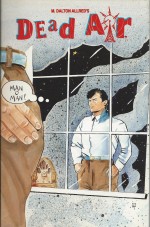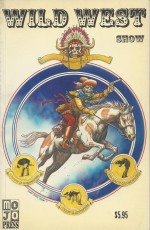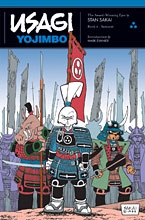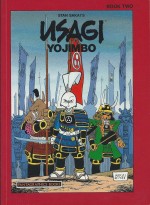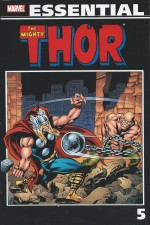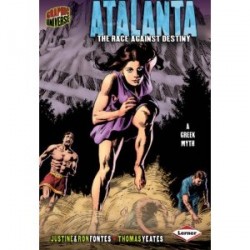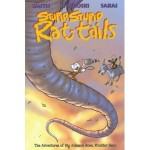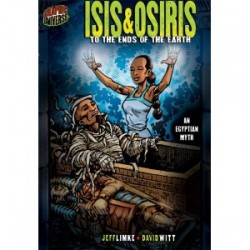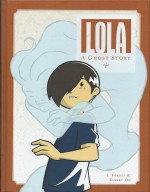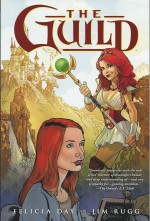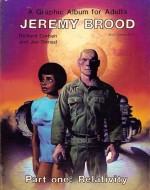
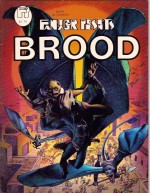
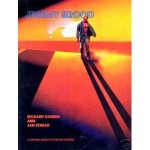
By Richard Corben & Jan Strnad with additional designs by Stan Dresser (Fantagor Press/Longhorn Book Distribution)
ASIN: B0006F7UMUÂ Â Â Â Â Â Â Â Â Â ISBN: 978-0-96238-410-3
Richard Corben is one of America’s greatest proponents and pioneers of graphic narrative: a legendary animator, illustrator, publisher and cartoonist who surfed the tumultuous wave of independent counterculture commix of the 1960s and 1970s to become a major force in pictorial storytelling with his own unmistakable style and vision. Renowned for his mastery of airbrush and anatomical stylisation – producing works of captivatingly excessive overwhelming eroticism – and infamous for delightfully wicked, darkly comedic horror, fantasy and science fiction tales, Corben’s epic storytelling, violent, cathartically graphic and often blackly hilarious triumphs through the 1970s and 1980s were instrumental in making comics a mainstream medium and art form for mature readers.
Always garnering huge support and acclaim in Europe, he was regularly collected in luxurious albums even as he fell out of favour – and print – in his own country. Although most acclaimed for interpretations of classic horror literature, he is equally adept at capturing the alarming nuances of technological terror and cynical political intrigue in shocking science fiction tales such as the truncated epic spotlighted here.
In 1982 he began, with long-time collaborator Jan Strnad, a proposed series of European style square-bound albums starring a troubled star traveller, but it sadly fell victim to an economic downturn before it could find its feet. This taste of a tantalisingly uncompleted greater epic began in Jeremy Brood: Relativity and was brought to an abrupt finish in the magazine Fantagor Presents Brood (Fantagor #5, 1983). The tale has since been collected in a book in 1989 and subsequently re-released in 1998.
The original chronicle begins with a fascinating glimpse at the artist’s working process in his picture-packed ‘Illustrators Notes’ before the full Technicolor experience opens with spare-faring civil servant Brood and his horny but frustrated co-pilot Charlene receiving a sub-space transmission from Earth.
An agent on the planet Eden has sent a distress call and they are to divert there at top speed. Their civilisation is at a cultural crossroads and needs nudging in the right direction – or so planetary sociologist Bernard Finchley claims.
However due to the relativistic nature of near-light speeds, the message is three years old by the time it reaches them and their short trip to Eden will take two centuries in local time…
When they at last arrive, the promised paradise world is a hot, dry desert but, following protocol and armed with the latest tapes of the language, Brood dons a disguise and makes his way to the nearest city, leaving Char and the ship as back-up in case of trouble.
It finds him anyway and the Earthman is attacked by barbaric grotesques and has to get physical with the brutes…
In the intervening years Eden has fallen into religious fanaticism, and as Brood enters the devastated city he is found by an aged cleric who draws him towards a vast gathering. The worshippers are about to sacrifice another nubile virgin maid to Holobar – an increasingly rare occurrence as most girls wisely “disqualify†themselves at their very first opportunity – in the hope that the prophesied saviour will appear to deliver them from their oppressive all-conquering deity. As Jeremy watches in secure anonymous horror, his ancient guide Narrl hurls him into the middle of the ceremony and urges him to deflower the alien maiden or be torn apart by the mob…
Repressed WASP Brood used to have trouble getting sufficiently amorous even with his black girlfriend in the privacy of their spaceship – and she was actually the same species – so this horrific situation almost ends in disaster until the old wise man smashes the stone mask on a huge idol above the altar. Underneath, the monolith has Brood’s face…
Shocked, panicked and realising he’s been set up by a man dead for centuries, Brood at last accomplishes what he was dispatched for, encouraged in equal measure by the willing female under him and the screaming fanatics surrounding him.
Meanwhile miles distant, desert brigands mount a lethal assault on the grounded starship…
Safe for the present, Brood and his new bride Brynne are filled in by the devious alien Priest – who is also Narrl’s brother. The old connivers are the great grandsons of Finchley and a native girl, and their family has been working to build a counter-religion and messiah-cult based on Brood’s eventual arrival in the expectation that his Earth technology will allow them to overthrow the oppressive, draconian fundamentalist followers of Holobar …
Jeremy can’t think about his proposed role as rabble-rousing rebel: he’s lost radio contact with Char, and is forced to trek back to the ship. En route, however, Narrl tries to kill Brood, revealing himself to be a traitor seeking to destroy the saviour and crush the people’s hope of redemption forever. Eradiating his betrayer Brood pushes on, only to discover he is now the only Earthling on Eden…
Fantagor Presents Brood came out a year later: a special edition of Corben’s own occasional and self-published art magazine which ran a conclusion of sorts in full colour, supplemented by a black and white reprint and a new unconnected monochrome fantasy tale.
(In case you’re wondering the reprint was Razar the Unhero’ written in 1970 by Herb Arnold as “Starr Armitageâ€: a dark and sexily violent spoof with a deprecating edge, deliciously lampooning the Sword and Sorcery epics dominating paperback bookshelves of the day. The new tale was ‘Ogre II’, a tragic comic monster love story sequel to a yarn that ran in Warren Publishing’s 1984 #4.)
Jeremy Brood however starred in the rocket-paced all-action shocker ‘The Big Shriek!’ which picked up moments after Relativity ended…
As Jeremy buries what remains of Charlene, hordes of airborne dragon-riding Holobar zealots pass over his head heading towards the city and the (presumably) impregnated Edenite Madonna, determined to end the heretical resistance forever…
Soon the city is under shattering bombardment and all looks black until the infuriated Brood storms in, crashing his barely airworthy ship into the central square and briefly driving back in the attackers.
Retreating to the temple, Brood and Brynne prepare for their inevitable end, but the cunning far-seeing and ruthless Bernard Finchley and his devoted disciple Priest had arranged a last-ditch contingency plan, with no thought at the horrific cost their centuries-separated dupe Jeremy would be forced to pay…
Moody and trenchant, laced with sparkling irreverence and cynicism, this parable could and should have found time to fully flower but the times and trends were against it. However Corben and Strnad’s sublime acumen in depicting humanity’s primal drives and inescapable failings has never been better exemplified, and at least the 80 or so pages that were complete are still available in one single edition should you care to check out yet one more book no comics or fantasy fan should be without.
© 1982, 1983, 1989 Richard Corben and Jan Strnad. All rights reserved.

